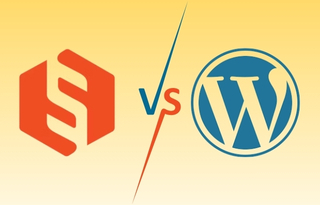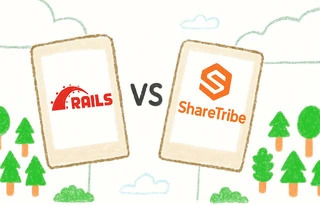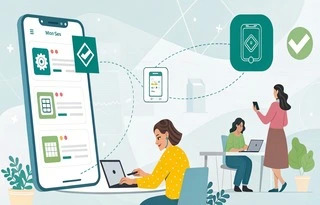By the end of 2024, the marketplace market is projected to reach approximately $3.832 trillion in Gross Merchandise Value (GMV), representing a significant growth trajectory with a 10% increase from the previous year. This surge underscores a notable shift in consumer behavior, as shoppers increasingly favor the convenience and variety of online marketplaces over traditional retail channels. As a result, there are promising prospects for launching a new business in this rapidly evolving sector. However, many are uncertain about the necessary steps to take before starting their own marketplace. One of the most popular questions among inexperienced entrepreneurs is, "What type of product is necessary to start: MVP, MMP, MLP?" We know the answer!
Do you have a brilliant idea for a marketplace startup or B2B solution? Are you driven by a singular vision that keeps you up at night? Perhaps you're motivated by one of these goals:
- "It solves customers problems."
- "It's going to fundamentally change the world."
- "I know how to set the course for an entire industry."
- "I'm going to be rich."
Whatever your inspiration, the question remains: "Is there a market for your product?" Confidently answering "yes" is important, but it's not enough on its own. Your affirmation should be based on solid evidence and market research, not just assumptions.
As you move forward with your idea, you'll need to decide on your initial product strategy. This often involves choosing between:
- MVP (Minimum Viable Product)
- MMP (Minimum Marketable Product)
- MLP (Minimum Loveable Product)
- Other types of minimum products
But which one should you choose to get an understanding of how commercially viable your project is? Fortunately, you don't have to rely on guesswork to find out. Each suggested launch option serves a specific purpose and gets you closer to your desired marketplace.
In this article, we'll help you make sense of these complex acronyms and understand the key difference between MVP vs. MMP vs. MLP, as well as briefly tell you how to develop a minimum product.
The main stages of launch
According to CBInsights, there are 1,245 unicorns worldwide with a combined value of more than $4.6 trillion. Most of them started their journey with small startups and MP solutions.
Launching a successful product always requires a lot of preliminary work. And it's not just about the MVP development process. Every new online marketplace startup goes through certain life cycle stages, after which it can expect to work successfully in the chosen market.
Each MVP stage startup has its characteristics and degree of influence on the development of a technology company. Let's take a closer look at them.
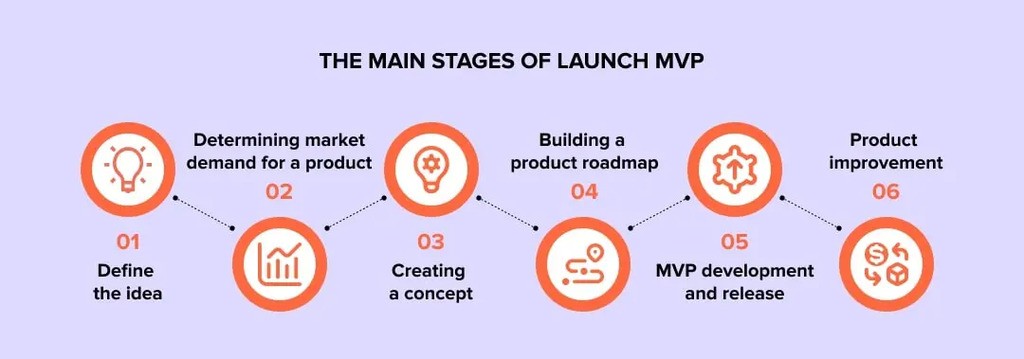
1. Shaping the idea
Any project to develop a minimum viable product marketplace begins with the idea and purpose of building a minimum viable product. Whether you wake up thinking about a new product or the concept is born through a team brainstorming session, this stage is one of the most important. You get that valuable seed that later grows into a new business.
But only if you understand that you are not holding a magic bean from Jack and the Beanstalk, and you need to prepare fertile soil to get a viable sprout.
2. Determining market demand for a product
Even though the born idea may seem like a cure-all, the truth is that not everyone will want to make it a reality overnight after presenting a product plan. Therefore, before you hire a team of programmers and create terms of reference for building a marketplace startup, you need to probe the market.
It will help to understand who is your target audience and competitors, as well as how your product will interest the former and outrun the latter. In this case, you need a marketing analysis phase to outline the full picture.
3. Creating a concept
Presenting your idea in the first tangible form to potential customers is essential. You can present your future product in a PowerPoint presentation, create a one-page website using a ready-made template, or design any other format. The main thing is to get initial reactions and feedback, as well as an understanding of whether the future project solves a particular problem.
4. Building a product roadmap
You have successfully taken the first steps described above, identified the need, and have an initial idea of the future product. Now it’s time to work on a marketing and minimum viable product strategy, which will be the main development plan.
It will also combine:
- peculiarities of brand creation;
- analysis of the market and competitive environment;
- a choice between MVP vs. MLP vs. MMP;
- competitive advantages;
- plans and business objectives.
In addition, this includes ways to implement the objectives and strategy for further brand development.
5. MVP development and release
Building a marketplace MVP with the minimum required set of features allows you to test your idea and its concept in practice. The value of the results obtained at the startup MVP development stage cannot be overestimated because you finally cross the threshold, moving towards creating a successful business instead of standing behind closed doors and wondering what awaits behind them.
Do not underestimate the role of MVP, and do not put off starting to build an MVP for startups.
6. Product improvement
After understanding the minimum viable product, based on the findings, you need to make changes to your strategy. Also, directly in the product, preparing a new and improved version of it. Preferably, it should be based on understanding real user needs, not theoretical assumptions.
Only two-sided marketplace startups who are willing to continuously grind out the details can achieve success.
MVP, MMP, or MLP? Understanding the definition and learning the difference between MVP and MMP, and MLP
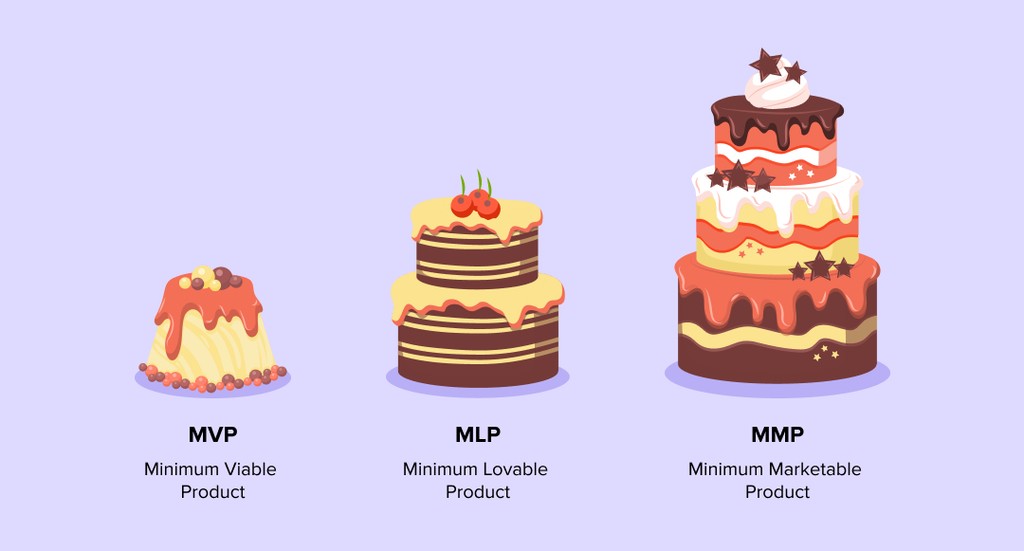
When it comes to confirming your product concept and the value you intend to bring to your end customers, many terms are easy to get confused about.
Let's get into the details:
- what these three-letter acronyms stand for;
- what MVP stands for in software;
- what their key differences are:
- from a technical point of view;
- from the point of view of expectations of potential users and investors.
In this article, we will compare minimum viable product vs. minimum marketable product, look at what MLP is and decide what the best choice for launching a startup is.
What is the minimum viable product?
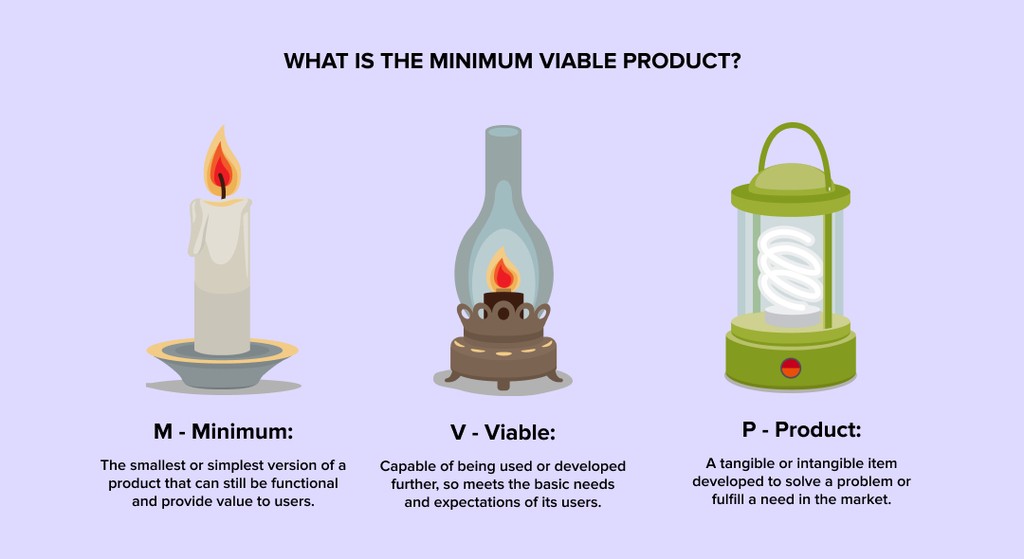
Probably one of the most widely used concepts in the technology world is MVP (minimum viable product). This concept, or rather the term itself, was introduced by an American entrepreneur, creator of 8 successful startups, and author of Customer Development methodology Steve Blank in the 1990s.
By the way, his methodology is often contrasted with the product-oriented approach, according to which it is important to make a perfect product and you will find a customer.
Now the term is mostly used to refer to the basic form of your product, inexpensive to implement and capable of meeting basic customer needs with its basic functionality. In other words, MVP for startups is the least you can present to users while expecting a response.
MVP value
The benefit of an MVP stage startup is to put your idea to the test and gather the data needed to understand what to do next with the project to achieve profitability and success. This is why a minimum viable product is important.
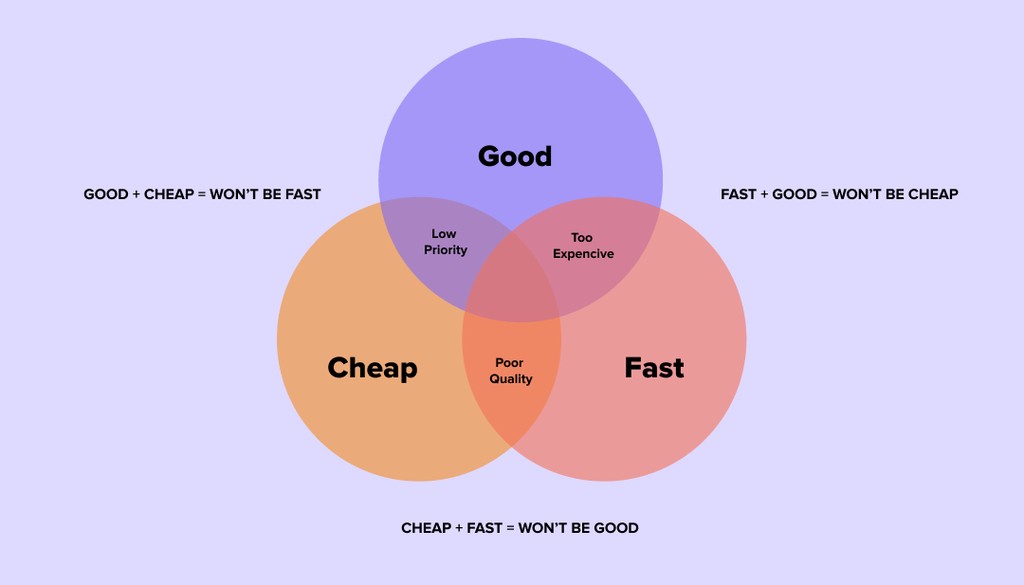
We all know about the "good-cheap-fast" triumvirate:
- Cheap + fast = won't be good
- Good + cheap = won't be fast
- Fast + good = won't be cheap
In this case, the startup MVP is a "cheap + fast" solution. MVP meaning in software development: the resulting product may not be good enough for a real full launch. At the same time, its value is obvious: you can find out at the initial stage if your idea can survive on the market and if someone needs the product in principle.
That’s why the MVP app is a choice dictated not by the desire to save money but by rationality and prioritization.
Advantages of MVP development for startups

Did you know that about 20% of startups have been on the market for less than one year? And that’s because they make some critical, for small businesses, mistakes. For example:
- use outdated technology;
- focus on the market, but not on customers;
- do not analyze the product niche;
- drain the budget by stuffing digital products with unnecessary functionality at the project launch stage;
- strive to release a finished version of an IT solution, ignoring even the PoC stage.
You could avoid these unfortunate mistakes if you make a minimum viable product, collect analytics and constantly improve your brainchild, adapting it to the needs of its target audience.
Quick and cheap idea check
You don’t need to release a full-featured product, investing significant financial and time costs to see if the market needs it. Building MVP for startups lets you launch a minimal future product quickly and cheaply. You can also get valuable analytics:
- knowledge about which features are in demand and which are not;
- what problems exist at this stage and how to avoid them in future product versions;
- what to improve, and what pain points of the target audience are worth targeting.
Also, by creating a minimum viable product, you can attract its first users, who will probably stay until the full launch.
If you still don't know how to build an MVP project and what steps to take to build an MVP – use MVP development services and expert help.
Testing and making changes with low risks and budgets
Entrepreneurs should realize that the marketplace MVP (at least the first one) is not created for profit. Rather, to understand the aspects and actions, a future e-commerce platform needs to successfully exist and develop.
Therefore, the concept must include those functionalities that need to be tested. You can experiment with the available "material" to understand what works best and, in doing so, not let a fortune down.
Flexibility to improve and change
There is a key idea in the MVP. Everything else is room for evolution. You can integrate new functionality and advanced technology to add value to your product and ultimately create a competitive advantage.
That’s why with MVP project management, you need to put in the necessary resources for testing and making changes in the work. Also, invest in a project management tool, which will help you organize the development and implementation of functionality more efficiently.
Validation of your idea for stakeholders
Having a prototype and MVP and the first data obtained is a strong argument for investors. Presenting your idea with a demonstration of a viable concept and scaling plans significantly increases the chances of a positive decision on project financing. Therefore, MVP value for the company's future is hard to overestimate.
What users expect from MVP
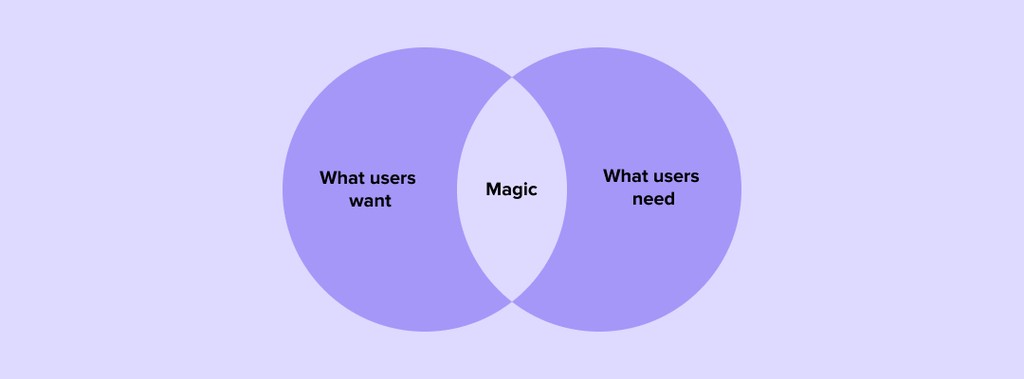
Remember the saying "There are as many opinions in life as there are people," which belonged to the Roman playwright Terentius? Despite the very advanced age of these words, they are still relevant today.
You must understand that your target audience is not one portrait prescribed in the ICP but real people with different experience levels, expectations, and interests. Nevertheless, even at the MVP stage, you should already be solving specific user problems with your product and generally finding an approach to them.
During the first introduction/test, they may be interested in different functions and focus on those features that will be most important to them.
Therefore, when preparing to collect analytical data, conduct a multi-step analysis, defined as qualitative indicators:
- opinions regarding functionality;
- how useful the product is;
- whether it's easy to interact with it.
So and quantitative indicators:
- pages visited;
- average interaction time;
- bounce rates.
This will give you valuable information for an in-depth analysis of your product.
What investors expect from MVP
Once the user testing is behind you, all the data is collected, structured, and encapsulated in a new action plan to improve the current version of the product, you can present the project to investors.
They need to secure their funds, so you must convince them that your current work is viable and will turn into a commercial, revenue-generating project.
In this case, there are numbers to which you can appeal after testing:
- feedback from real users;
- a down-to-earth business plan;
- MVP.
They will show investors that you know exactly what the next steps should be for the successful development and launch of the marketplace. This means your product is worthy of attention, and they can invest in it.
As the project develops, you may have (and most likely will have) several MVPs, each of which will be an improved version relative to the previous iteration. What comes after a minimum viable product? At the end of this process, when you've found a basic set of features your users are willing to pay for, you'll move on to an MMP or minimum marketable product.
What is MMP? What does MMP stand for software?
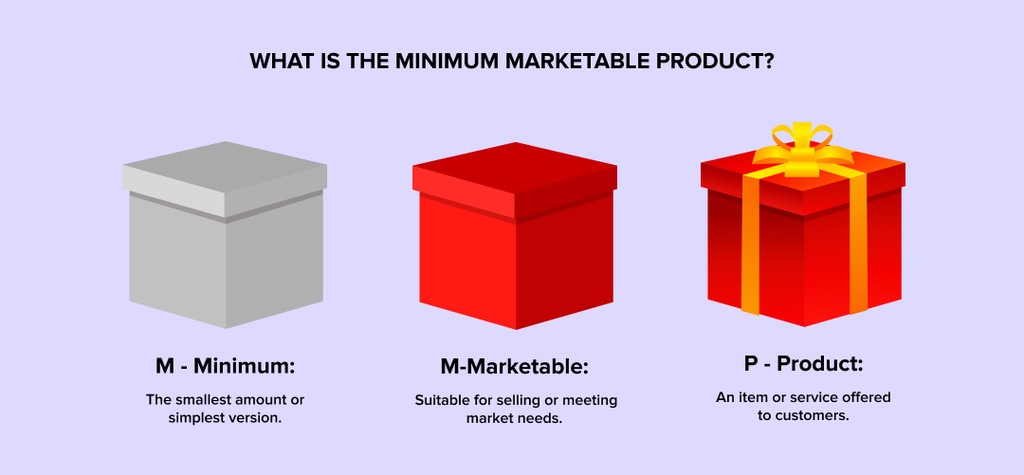
About 25% of startups stay on the market for over 15 years. More often than not, they belong to unicorns with over $1 billion capitalization. How do you achieve such a result when starting a startup? By systematically developing your product from an MVP to a ready-made solution with extended functionality without skipping the scaling stages.
If the MVP is created to test an idea, then the MMP (minimal marketable product), the opposite of minimum viable product, is the best version of all existing MVPs. It also has a set of already proven features that meet the needs and concerns of the target audience, ensuring competitiveness.
That said, the concepts of product strategy and product roadmap MVP MMP are very similar. The MMP is the simplest version sellable product with the minimum marketable features, so it can already be monetized. We can resort to elementary math to simplify the understanding of how to combine the MVP and the MMP.
MVP ver.1 + MVP ver.2 + MVP ver.3 + … MVP ver.n = MMP,
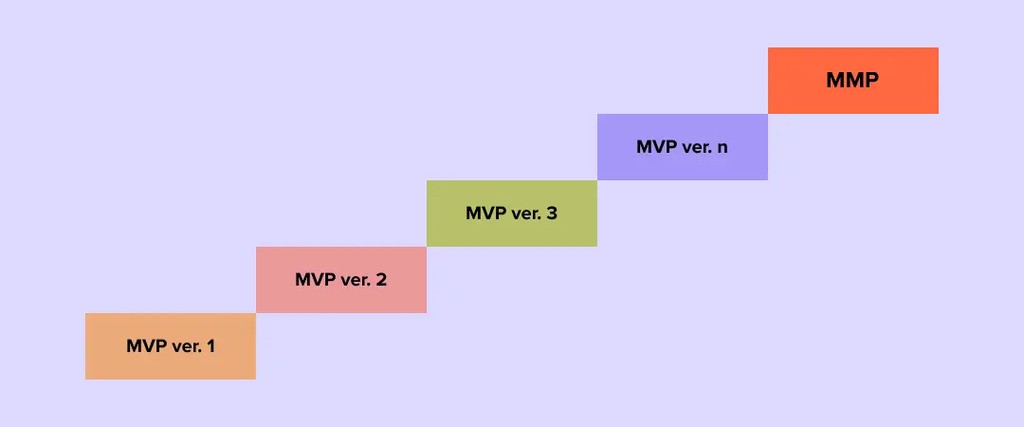
That is, MMP is nothing but the sum of all MVP marketplace development stages with positive commercial content.
One of the benefits of MMP is the ability to get some return on investment while you are still working on the project. Building a minimal marketable product takes less time and expense than deploying a full-featured solution.
Also, an essential benefit of MMP and MVP is understanding the future user response to your final product once it is launched. The scalability of MMP software allows you to adapt to changes on the fly and hit your target 100% of the time.
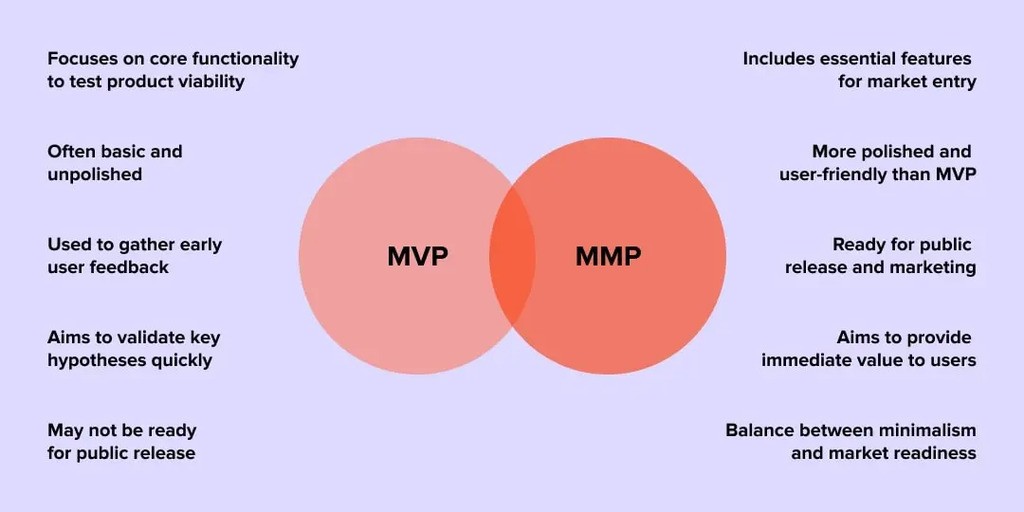
What users expect from MMP
This product version is designed for that segment of the target audience that likes to be among the pioneers and joins projects in the early stages for novelty. Such users are willing to put up with or overlook the rough edges if you can provide innovative features and useful functions.
Isn't that a reason to launch MMP product development and please the audience with a new solution?
What investors expect from MMP
Market MMP sellable product is the first iteration of a real market launch. The product has already been tested and represents a set of commercially necessary and satisfying user needs. Therefore, investing at this stage is usually the safest.
However, it is important to investors that you can provide some advanced technology or features that will serve as a strong competitive advantage. Make sure you have them.
MMP building generally requires a low investment with minimal risk for investors, so you are more likely to find funding with a marketable version.
What’s the catch?
The e-commerce market is increasing, and the number of marketplaces and online stores is growing relentlessly. Suppose your idea is not some complete breakthrough, and you are not creating a new marketplace but entering an existing one with a minimal version sellable product. In that case, you risk finding yourself in a difficult situation.
You are unlikely to surprise your audience with only basic features that are easy to find on platforms already known to users.
If you have an idea for an established market but want to avoid the risks described above, you should not think about MVP or MMP but make your own MLP, the minimum lovable product.
What is MLP?
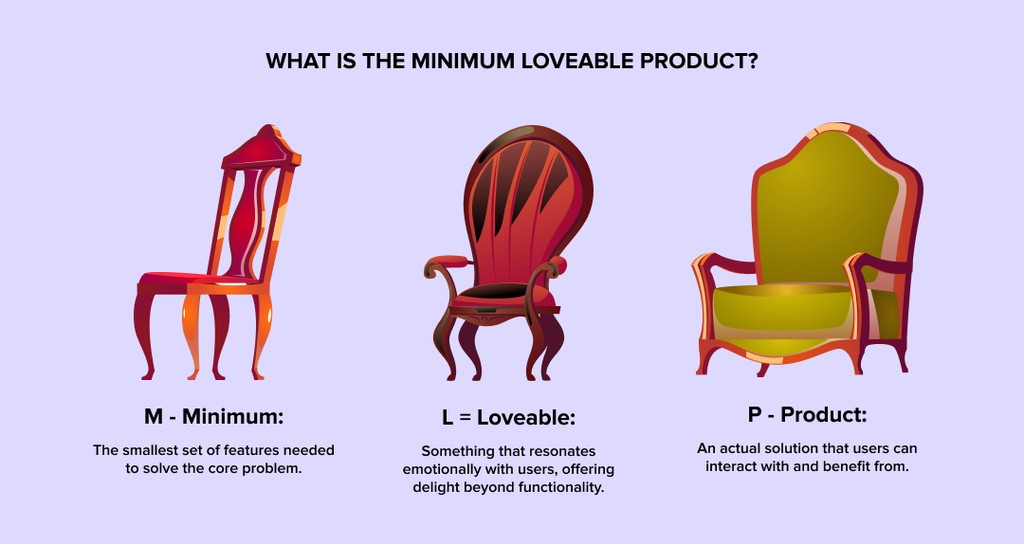
According to Zippia, the average startup needs about 3-4 years to start making a profit. And only 40% of the total number of startups have a net income. The rest work at zero or are unprofitable at all. But this is mostly true of MVPs. MLPs are making a qualitative step forward in this respect, attracting investments and generating income from the company's direct operations.
A common feature of MVP, MMP, and MLPs is that they offer users only a tiny fraction of what is expected in the final result. However, suppose the MVP does not contain anything that is not an essential functional element. In that case, the MLP definition implies creating a product so that it is immediately loved. Sometimes even at the expense of functionality.
We all grew up on Disney fairy tales and cartoons, which vividly show us how great the power of love is. It can turn even a frog or a monster into a handsome prince. This message has been honed by culture throughout our lives, so it is not surprising that it works perfectly in business.
MLP (minimum lovable product), like MVP, is a minimal version of what you plan to run eventually. However, this product is always more than just functionality.
It's an emerging brand. It is an ordinary frog with a little crown on its head. So even as the most scrupulous critic and realist, you are ready to be imbued with the idea of further magical transformation.
The value of MLP development
The basic MLP idea is that you focus on the most important features rather than the minimum expected of MLP products in a given class. You refine your chosen functionality by adding a nice wrapper to it.
The trick to this methodology is that your marketplace should not just be functional but:
- consistent;
- well-implemented;
- enjoyable enough to elicit initial emotional reactions.
In this case, they can be both exclusively positive and seasoned with negativity. It does not matter. The main thing is to avoid indifference because emotions stimulate participation, and you understand how users like or would like to like your product.
Benefits
People have always had a weakness for brands because they are more than just companies or websites. They give rise to a certain lifestyle and complement a personality. Users want to be part of them, so they are willing to share information with their friends, colleagues, and partners.
Create your own MLP, and from day one, you’ll get:
- supporters;
- followers;
- free advertising;
- competitive edge.
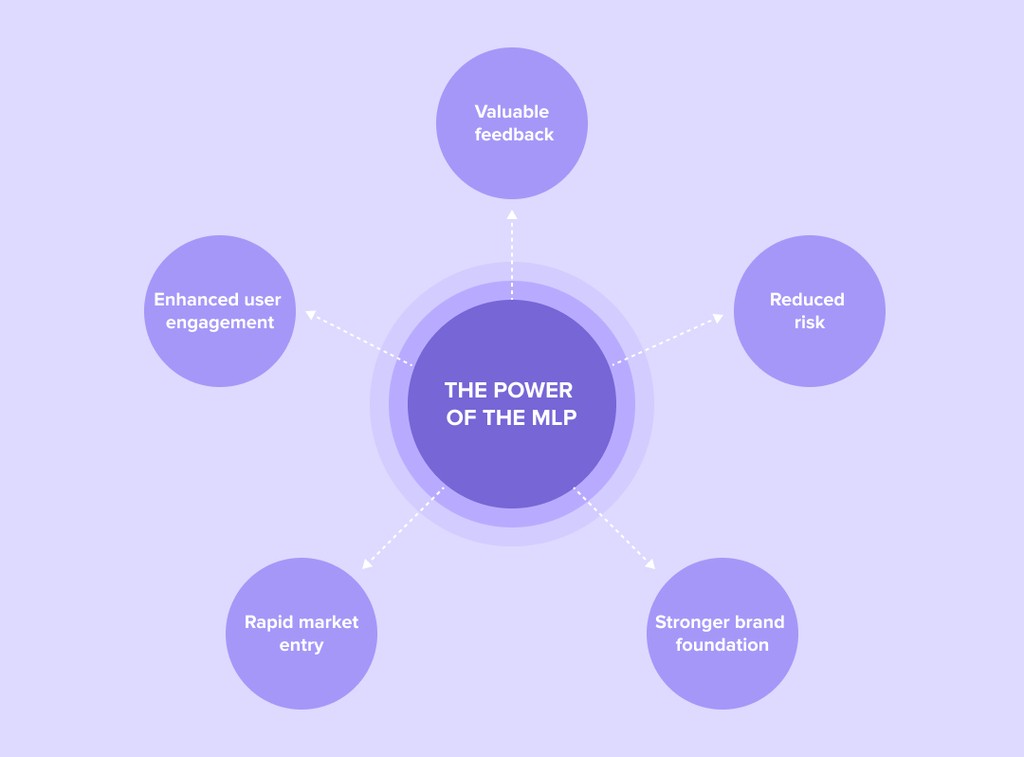
That is, not only a quantitative but also a qualitative audience. Thus, the frog turns into a beautiful prince and bypasses the amazed know-it-all of your competitors in the niche of the lovable product. Emotions are very influential and can be the deciding factor in overcrowded markets.
Features
On the technical side, the difference between the MVP startup and the MLP prototype is the investment in design. Often, to present basic functions and the mechanism of their operation, companies sacrifice:
- work on the perfect user experience;
- emotionally appealing design;
- branding.
This can lead to MVP potentially getting lost in the marketplace among other e-commerce platforms offering similar capabilities. Thus, MVP is ideal when you are proposing a new concept. In most other cases, you need an MLP or an MVP to MLP transformation.
Creating an MLP will cost you more than launching an MVP and will require more time and effort, both technical and marketing. But, if you manage to emotionally connect the first users to your product, consider that you have every chance of winning and long-term success.
User expectations from MLP
If, in addition to its viability and technical feasibility, your product is also cool – this can be a deciding factor in the decision to use the marketplace early on. It is also a catalyst for scaling and developing all aspects of the IT solution.
So when creating MLPs, focus not only on technically feasible but also on amazing features that evoke wow effects and delight users. Make the platform visually appealing using design magic, provide a positive user experience, and add a touch of personality.
You can find inspiration in Apple products and the history of their presentations to the public. In other words, people will likely choose a great product over a boring, albeit technically perfect one.

Investor expectations from MLP
Investors know firsthand the viability and potential of true MLPs. Therefore, they want to ensure that the MVP has indeed reached the level of an MLP.
It’s insufficient to show a beautiful website or app in a collaborative marketplace. Prepare in advance the results of user reactions. Attract supporters and followers passionately engaged with the product.
This will help prove its brand appeal. If you can convince investors that your platform is a promising MLP, funding will not be long in coming.
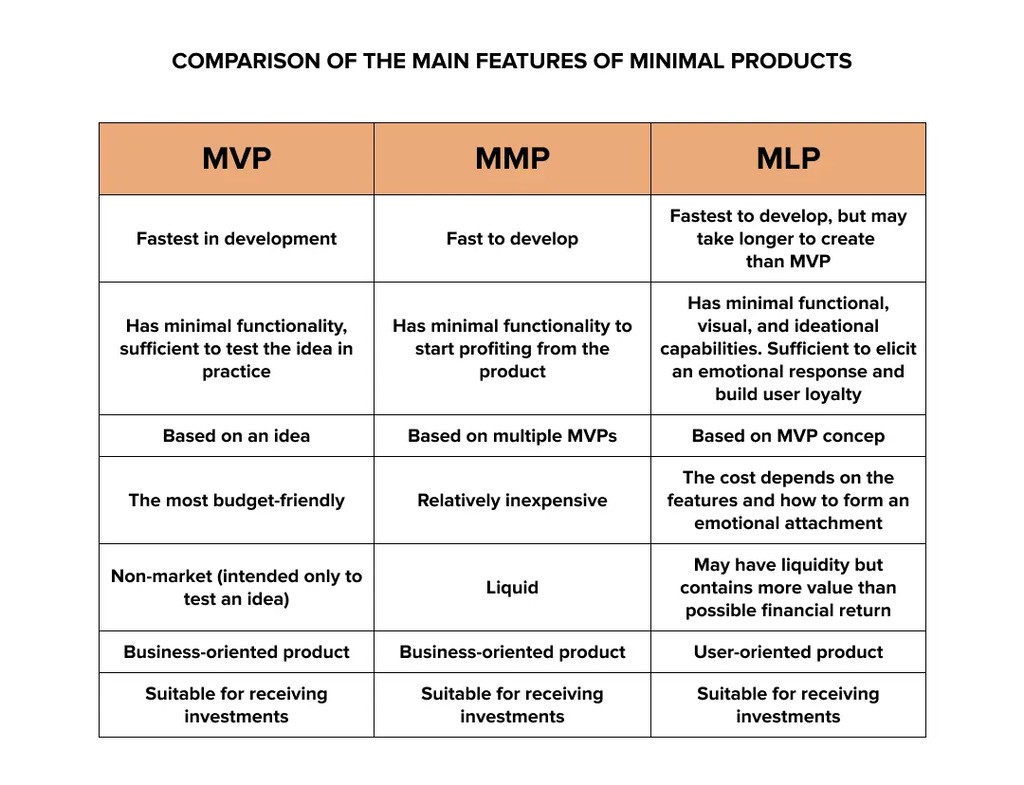
To summarize
The first technical launch of your product can be intimidating and confusing with many terminologies. However, having a clear idea of the key stages of development and understanding your priorities at the beginning of the journey will help you decide.
Ultimately, the main goal of any MP is to prove the idea in practice, gather feedback from real users, and get a strong argument for funding when communicating with potential investors.
- MVP is pure evolution, a step-by-step journey into a better future.
- MMP is the steady positive product of evolution but not the result.
- MLP is a revolution in its purest form.
After all, you are gathering followers, arming them with the concept of the idea, and making them not only see and love your end goal but also be a catalyst in achieving it.
Whatever minimal product you choose, make the most of the opportunities it gives you to bring your dream marketplace to market.

Roobykon Software is always ready to offer the best launch option for your business and go through all the stages of its technical and marketing development side by side with you. Creating more than 12 years of successful e-commerce platforms for our clients, we are ready to offer more than just a professional technical team.
Do you have an idea for a marketplace? We are ready to discuss it right now!

